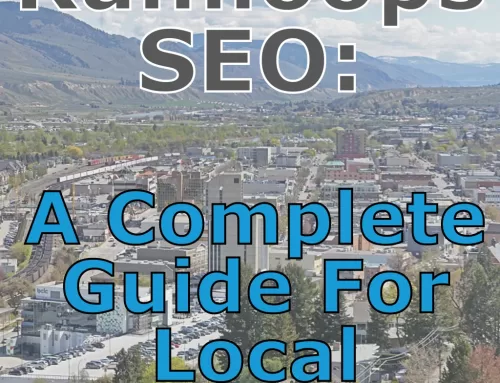When it comes to achieving long-term success with organic SEO, technical SEO forms the backbone of your strategy. While content and backlinks often grab the spotlight, the technical foundation of your website is just as critical. Without it, even the best content may fail to rank.
In this article, we’ll explore the key components of technical SEO, why they matter, and actionable steps you can take to ensure your website is optimized for both search engines and users.
What is Technical SEO?
Technical SEO involves optimizing your website’s infrastructure to help search engines crawl, index, and rank your content more effectively. It focuses on backend elements such as site speed, mobile responsiveness, crawlability, and security.
In essence, technical SEO ensures your website is built on a solid foundation that supports higher rankings, improved user experience, and better overall performance.
Why Technical SEO Matters
- Enhanced Crawlability: Search engines use bots to crawl websites. A technically sound site makes it easier for these bots to access and understand your content.
- Improved Indexing: If search engines can’t index your pages properly, they won’t appear in search results.
- User Experience: Factors like fast loading speeds and mobile-friendly design improve user engagement and reduce bounce rates.
- Competitive Advantage: Many websites overlook technical SEO, giving you an edge if you prioritize it.
Key Components of Technical SEO
Let’s break down the essential elements of technical SEO and how to optimize them:
1. Website Speed and Performance
A slow-loading website frustrates users and can lead to higher bounce rates. It’s also a ranking factor for Google.
Optimization Tips:
- Minimize HTTP requests by combining CSS and JavaScript files.
- Compress images using tools like TinyPNG or ImageOptim.
- Leverage browser caching to store static resources locally.
- Use a Content Delivery Network (CDN) to distribute content globally and reduce load times.
Tools to Use:
2. Mobile-Friendliness
With mobile devices driving the majority of web traffic, having a mobile-friendly site is non-negotiable. Google uses mobile-first indexing, meaning it primarily evaluates the mobile version of your site for ranking.
Optimization Tips:
- Use responsive design to ensure your site adapts to various screen sizes.
- Test your site’s mobile performance using Google Chrome’s built in Mobile-Friendly Test.
- Optimize navigation and ensure clickable elements are appropriately sized for touchscreens.
3. Crawlability
Crawlability refers to how easily search engine bots can access and navigate your site. Barriers to crawlability can prevent search engines from indexing important pages.
Optimization Tips:
- Create and submit an XML sitemap to Google Search Console.
- Use robots.txt to control which pages search engines can and cannot crawl.
- Fix broken links and avoid orphan pages (pages without any internal links pointing to them).
4. Indexing
Even if a page is crawlable, it doesn’t guarantee it will be indexed. Indexing ensures your pages appear in search results.
Optimization Tips:
- Avoid duplicate content, which can confuse search engines.
- Use canonical tags to indicate the preferred version of a page.
- Regularly review your indexed pages in Google Search Console and address any “Excluded” issues.
5. HTTPS and Site Security
Security is a ranking factor, and users expect secure websites. HTTPS encrypts data transferred between users and your website, building trust and protecting sensitive information.
Optimization Tips:
6. URL Structure
A clean, logical URL structure helps both users and search engines understand your content.
Optimization Tips:
- Keep URLs short, descriptive, and free of unnecessary parameters.
- Use hyphens to separate words (e.g., example.com/technical-seo-tips).
- Avoid dynamic URLs with random strings of numbers or letters.
7. Structured Data (Schema Markup)
Schema markup helps search engines understand your content better and can enhance your search result with rich snippets, such as reviews, FAQs, and event details.
Optimization Tips:
- Use schema.org markup to highlight key information like product reviews, recipes, and events.
- Test your structured data using Google’s Rich Results Test tool.
8. Fixing Errors and Redirects
Search engines penalize websites with too many errors, such as 404 pages or redirect loops. These issues can also frustrate users and reduce engagement.
Optimization Tips:
• Use tools like Screaming Frog or Ahrefs to identify crawl errors.
• Redirect broken links to relevant pages using 301 redirects.
• Audit your site regularly to catch and fix issues promptly.
9. Core Web Vitals
Core Web Vitals are a set of metrics introduced by Google to measure user experience. They include loading performance (Largest Contentful Paint), interactivity (First Input Delay), and visual stability (Cumulative Layout Shift).
Optimization Tips:
- Improve server response times.
- Optimize images and use next-gen formats like WebP.
- Reduce JavaScript execution and eliminate unnecessary scripts.
10. Duplicate Content and Canonicalization
Duplicate content can confuse search engines, diluting ranking potential and wasting crawl budget. Canonicalization helps signal the preferred version of a page.
Optimization Tips:
- Use canonical tags to point to the original content.
- Consolidate duplicate pages and redirect old versions.
- Avoid thin or boilerplate content across multiple pages.
Common Technical SEO Mistakes to Avoid
Even with a solid strategy, mistakes can happen. Here are some common errors to watch out for:
- Blocking Important Pages: Overusing robots.txt or noindex tags can unintentionally block valuable content.
- Slow Site Speed: Neglecting speed optimization can hurt rankings and user experience.
- Ignoring Mobile Optimization: A desktop-first approach can cost you mobile traffic.
- Broken Links: Leaving broken internal or external links unchecked harms usability and SEO.
Technical SEO and Content Siloing
Technical SEO works hand-in-hand with content siloing. By organizing your content into clusters with clear internal linking, you make it easier for search engines to crawl and index related pages. For example, a silo on “SEO” could include subtopics like keyword research, on-page optimization, and link building, all interlinked to reinforce topical authority.
Conclusion
Technical SEO is the foundation that supports all other aspects of your SEO strategy. Without a technically sound website, your efforts in content creation and link building may fail to deliver the desired results. By addressing factors like crawlability, speed, mobile-friendliness, and security, you ensure that both search engines and users can access your site with ease.
Start implementing these technical SEO practices today, and watch as your site’s performance, rankings, and user engagement improve significantly. Remember, a strong foundation is the key to SEO success in 2025 and beyond.




